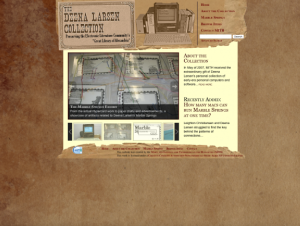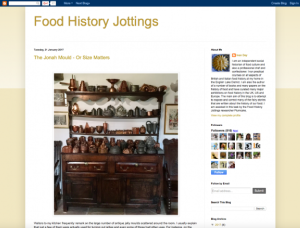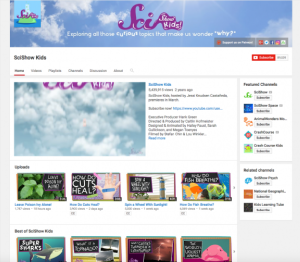General Interest
Back to Top
|
 |
|
Deena Larsen Collection
|
Science |
|
In 1993, Deena Larsen published a fictional story and poetry collection called Marble Springs. This story, published as a HyperCard stack by Eastgate, was one of the first works of literature to be written with hypertext. Larsen has since published a number of new media pieces and worked closely with other new media writers, while also maintaining an impressive personal collection of materials relating to the history of computers and software. In 2007, she donated this collection to the Maryland Institute for Technology in the Humanities (MITH). With this fascinating online exhibit from MITH, visitors can explore Larsen's work and personal collections. Those intrigued by Marble Springs can check out an emulated screenshot of the work, accompanied by Larsen's own reflections on the project. As she explains, after the death of the HyperCard, "I mounted exhibits of Marble Springs to showcase how quickly things become antique, replete with an old braided rug and a school desk rescued from a mountain-fast one-room school." Visitors may also like to view a number of items from Larsen's personal collections, including photographs of obsolete computers, draft notes from Marble Springs and other new media projects, and 1990s comic strips that explore the early days of the internet. [MMB] |
|





|
|
 |
|
Eyes on the Past
|
Social studies |
|
"Faces offer an instant connection to history, reminding us that the past is full of people," writes Tim Sherratt, Associate Professor of Digital Heritage at the University of Canberra and the designer of Eyes on the Past. For this unique project, Sherratt downloaded hundreds of images of people's faces that appeared in Australian Newspapers between 1880 and 1954. He accessed these images from Trove, a digitized newspaper archive from the National Library of Australia. Each time visitors access the homepage of this project, they will view a new, random assortment of images, focused on the photographed (or illustrated) subject's eye. By clicking on each image, visitors can view the full image accompanied by the title and date of the newspaper where the imaged appeared. Visitors can then check out the complete article record from Trove. Featured photographs come from a wide array of articles, including a 1915 announcement of Australians killed in World War I; a 1902 notice announcing an Australian performance from the Royal Italian Opera Company; and a series of 1899 illustrations of "Federal Leaders." [MMB] |
|





|
|
 |
|
Hecho a Mano: Book Arts of Latin America
|
Arts |
|
This collection from the University of North Carolina Library highlights book art from three Latin American countries: Argentina, Cuba, and Mexico. As Teresa Chapa, the project's collector and curator, explains: "This exhibition highlights two of these trends in publishing and book-making that are quite distinct, as well as some of the ways that they intersect. One trend preserves time-honored traditions; the other experiments with format or playfully subverts it." This collection, which includes over 100 images of book art spanning from 1989 to 2008 may be browsed by Author, Country, Date, or Publisher. Each item in this collection can be enlarged and viewed in detail, accompanied by cataloging information. The collection includes book art that employs a wide variety of techniques and materials, including textile design, collage, printmaking, and more. It will appeal to anyone interested in Latin American art as well as graphic design lovers. [MMB] |
|





|
|
 |
|
Microbe TV
|
Science |
|
Microbe TV, a podcast network for science lovers, offers a series of weekly podcasts that may appeal to students, health professionals, and members of the general public. In 2008, two Columbia University professors, Vincent Racaniello and Dickson Despommier, founded This Week in Virology (TWiV), a weekly series of ninety minute episodes that explore a wide variety of topics, frequently with the aide of regular guest or expert hosts. As the title of the show suggests, TWiV specifically focused on new research and developments in virology, providing a way for listeners to learn more about topics currently in the news. As of this write up, more than 400 episodes of TWiV have been produced. In 2015, Racaniello founded Microbe TV with the aim of supporting other scientist-created podcasts. Since then, TWiV has been joined by five additional shows: This Week in Evolution, This Week in Microbiology, This Week in Parasitism, Urban Agriculture, and Virus Watch. From this website, visitors may listen to past episodes of these podcasts and check out related resources. Interested listeners may also subscribe to these shows via iTunes. [MMB] |
|





|
|
 |
|
 |
|
 |
|
National Archives: Records Related to D-Day
|
Social studies |
|
June 6, 2017 marks the 73rd anniversary of the D-Day Invasion of Normandy. For readers who would like to learn more about this historic event, this page of Records Relating to D-Day from the U.S. National Archives and Records Administration (NARA) may be of interest. For instance, visitors may watch a 1944 newsreel about the invasion or browse NARA's Online Catalogue, which contains almost 5,000 entries related to D-Day; 2,785 of these items are available online. Digitized items include additional newsreels, audio recordings, photographs, maps, and charts. Visitors may also view the transcript of an 1986 Department of Defense interview with D-Day veterans; read Franklin D. Roosevelt's D-Day prayer (delivered on June 6, 1944); and see a message drafted by Gen. Dwight Eisenhower on June 5, 1944, to be delivered in the event that the invasion failed. Collectively, these materials provide insight into D-Day and its enduring legacy. [MMB] |
|





|
|
 |
|
Food History Jottings
|
Social studies |
|
Food History Jottings is authored by Ivan Day, a food historian specializing in seventeenth and eighteenth century food culture, primarily in Great Britain. Day is also a professional chef and confectioner who teaches courses at his home in the Lake Country and at other UK cooking schools such as The School of Artisan Food, where he will be teaching day-long courses on historical techniques for cooking pies and ices in September. The stated purpose of the blog is to "expose and correct many of the fairy stories that are written about the history of our food." The most recent post, dated January 31, 2017 does just that. The post begins with an image of some of Day's large collection of moulds - the shelves they are arranged upon are literally sagging from their weight. Day goes on to explain exactly why two attempts to use a mould, to steam a plum pudding and to shape a jelly, as featured in the television program, The Victorian Bakers at Christmas, failed. Earlier posts describe more of Day's moulded food creations, primarily sugar sculptures, and related events at the Grosse Pointe War Memorial and Detroit Institute of Arts in February 2017. There is also video of sugar sculpture from a 2015 exhibition at the Getty Museum in Los Angeles. [DS] |
|





|
|























